
The pileated woodpecker (Dryocopus pileatus) is a large, mostly black woodpecker native to North America. An insectivore, it inhabits deciduous forests in eastern North America, the Great Lakes, the boreal forests of Canada, and parts of the Pacific Coast. It is the largest confirmed extant woodpecker species in North America, with the possible exception of the ivory-billed woodpecker…which may be extinct. It is also the third largest species of woodpecker in the world, after the great slaty woodpecker and the black woodpecker. "Pileated" refers to the bird's prominent red crest, from the Latin pileatus meaning "capped."
Pileated woodpecker heads were used on pipes in the Mandan Adoption Ceremony. The range of the woodpeckers was more southern until this century. Given its rarity, the acquisition of the upper bill and distinctive red crown was a major achievement for one engaged in the ceremony. One historic account has a head having to be brought from the St. Louis area of Missouri, and it was traded for a large buffalo robe, horses, and corn (The Winged: an Upper Missouri River Ethno-Ornithology.)
This is classic cross-cultural symbolism of status and power. Having the resources to acquire the upper bill and crown of a pileated woodpecker illustrates the owner is well connected and wealthy. It has the same symbolism of a diamond, for example—being rare and hard to obtain. I don’t want to dig into it here in too much detail, but it also becomes a signal to females that the male who has this status (if it is a male), will be able to provide for her offspring. Since reproduction is so costly for females, they need to be choosy. Just like the pea hen selects the pea cock with the most beautiful and symetrical tail to mate with, most species, including humans, have these mechanisms in place.
I’ve been hearing pileated woodpeckers for years at Cedar Bluffs—its call is remarkable:
Some people think the cartoonist Walter Lantz used the sound of the call of the pileated woodpecker as inspiration for Woody Woodpecker’s laugh. Judge for yourself:
A few weeks ago, my son Asa captured this video above of a pileated woodpecker somewhere in the woods of Massachusetts.
Above is the pond Sunday morning, and how it sounded. Anyone know what that barking kind of noise is? Starts at about eight seconds in, and repeats.

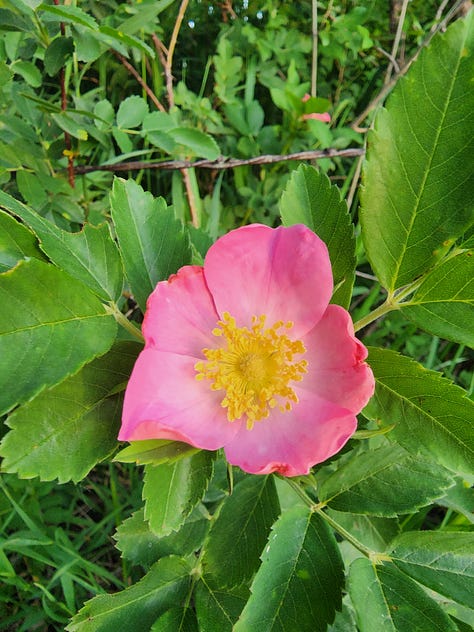


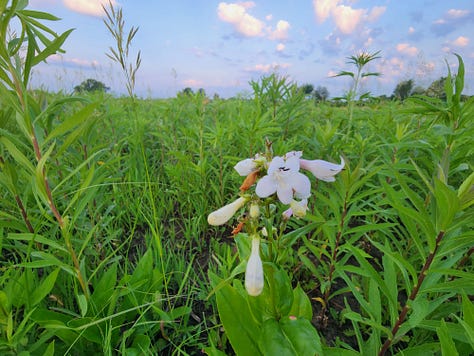

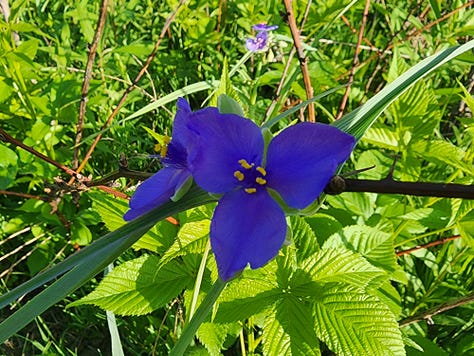
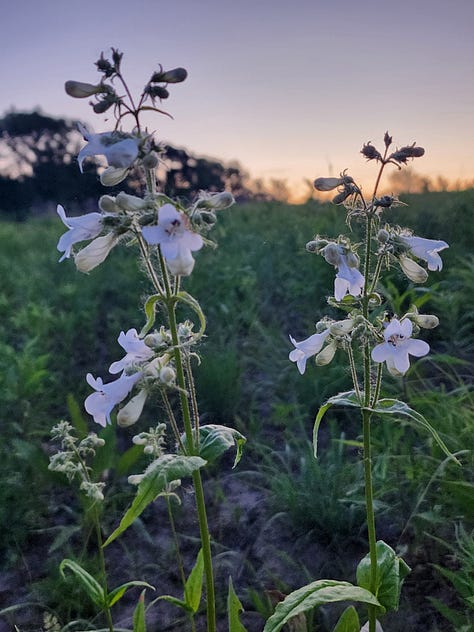
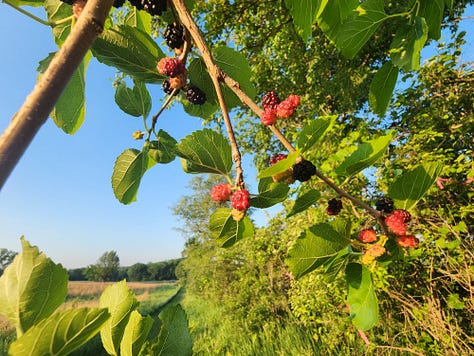
Remember the last post, when Violet the Dog and I were wondering about a tractor, and what surveying stations and flagging tape might mean?
We still don’t know all of what is going on, but from what we saw live traps were set in two transects, north and south, and east and west in a field. Looks like someone is doing a biological study of small mammals! Such important work. We’ll try to find out more. I was lucky enough in grad school at the University of Washington in Seattle to take a mammalogy class, and we did the same thing, only in eastern Washington. So fun! So important! I hope I can read the results of the research, and share them here.
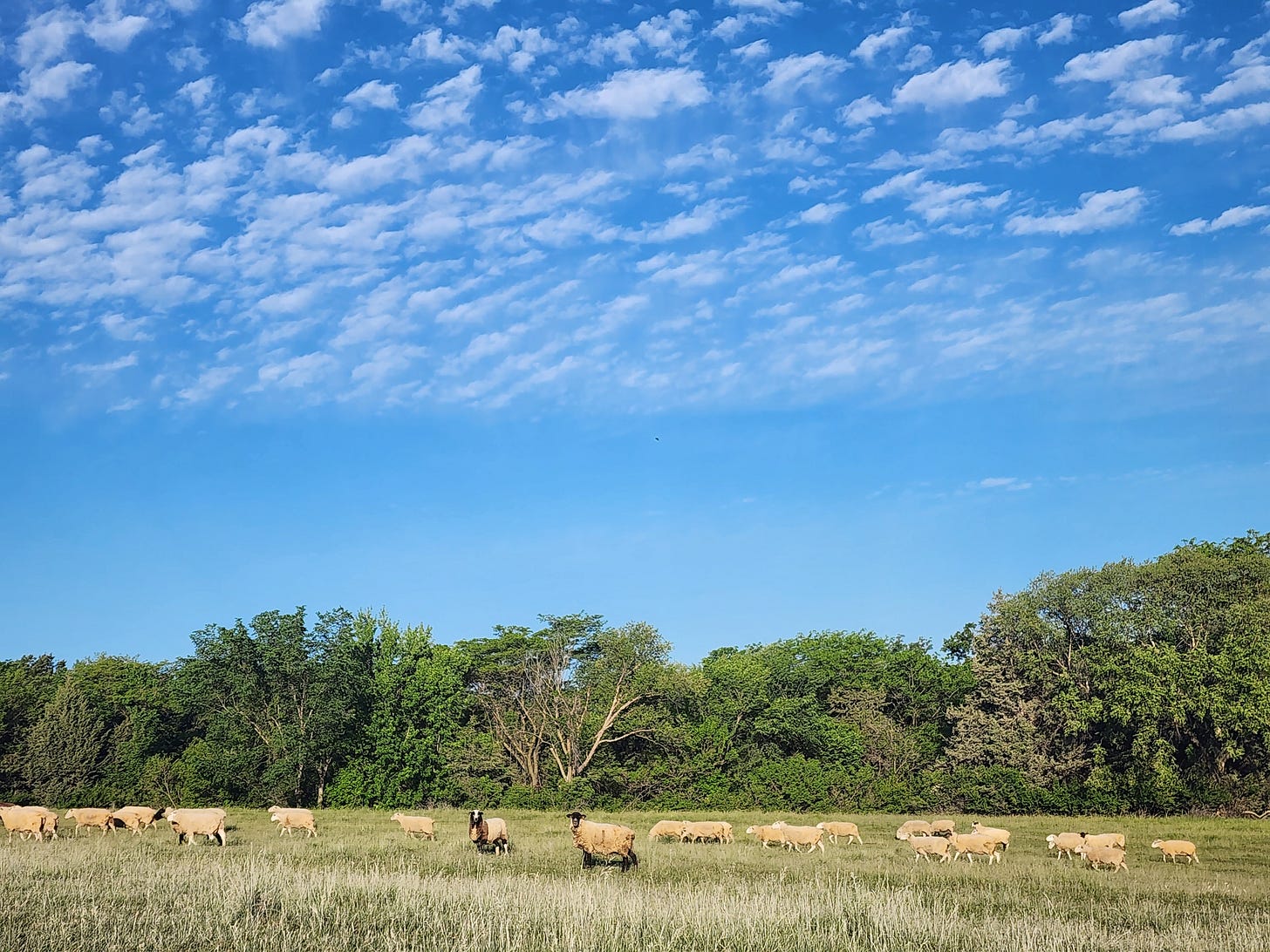
We took a different route home, just for the fun of it, and met some friendly sheep.
I’m a member of the Iowa Writers Collaborative. Please sample the talents of my fellow collaborative members. If you can afford to be a paid subscriber, that would be great. If not, the vast majority of content is free. And here is a link to the Iowa Podcasters’ Collaborative, should you be interested. Check out my Substack Deep Midwest: Politics and Culture if you aren’t already a subscriber. My Iowa Revolution podcast with award-winning broadcaster Spencer Dirks can be found here.
After spending nearly 20 years in radio, I know a little about public relations, and have started a small consulting group and associated Substack called Better PR. You might be interested in what I have to share there. Thanks!



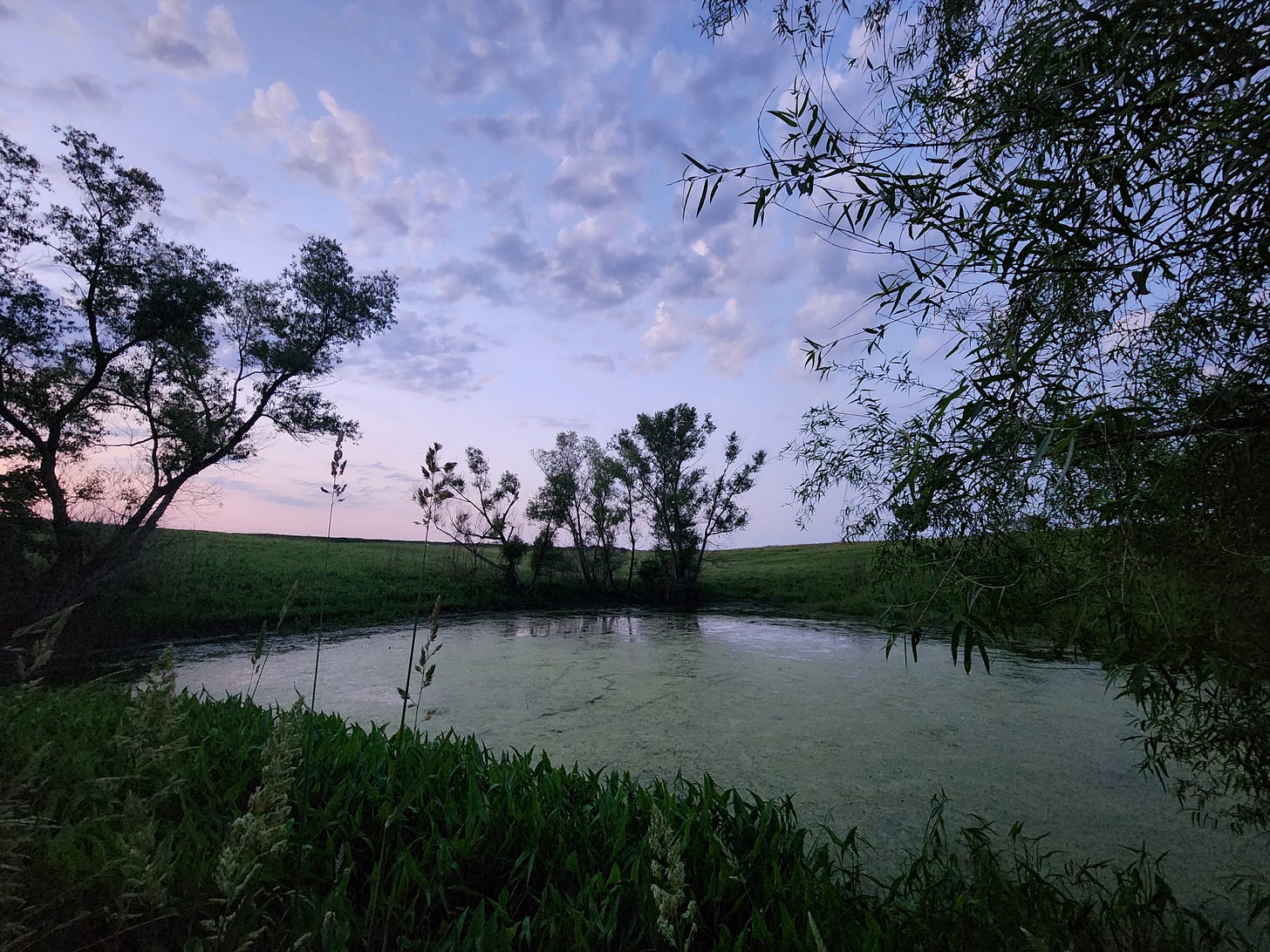
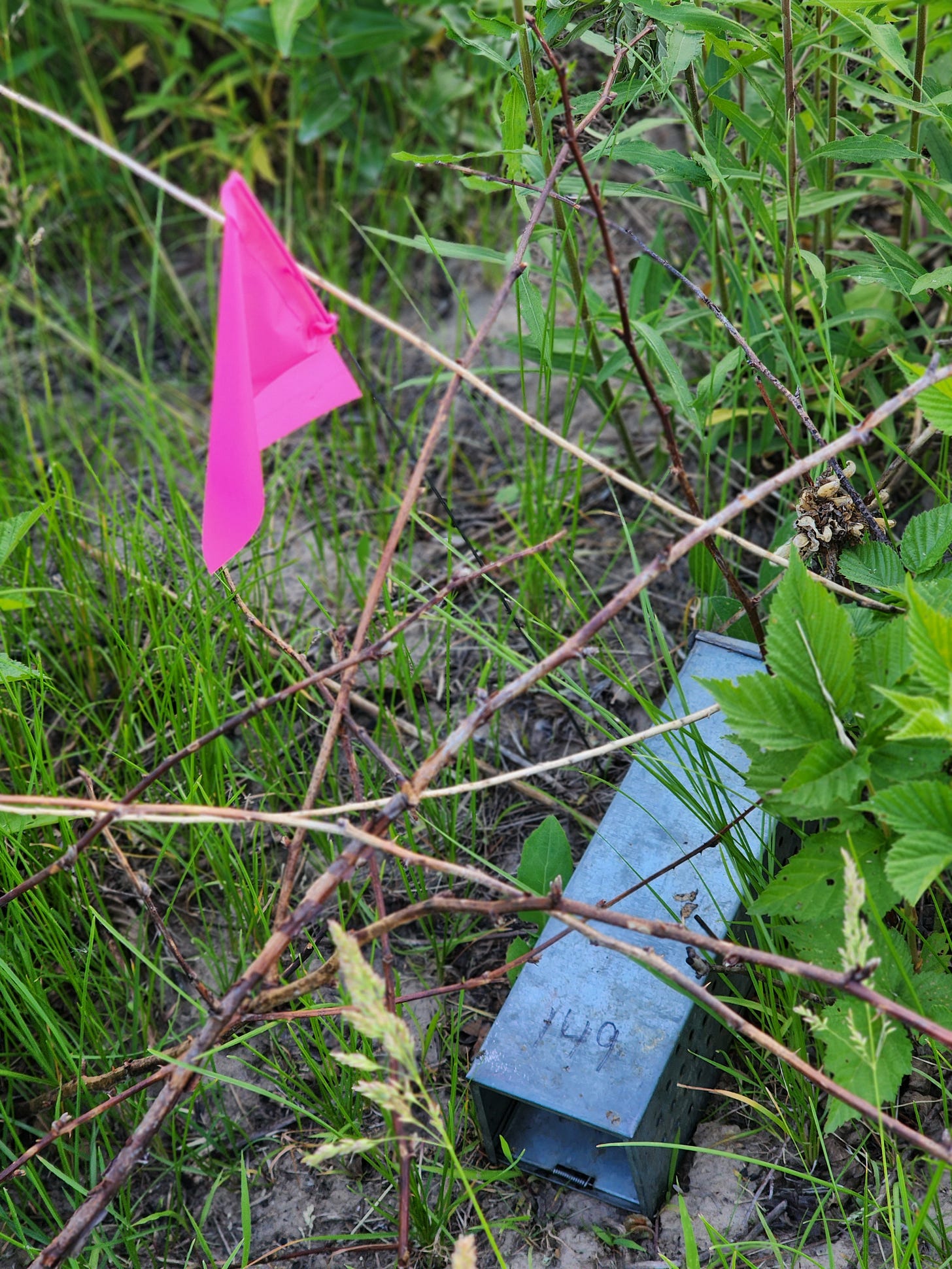
Another person got it but can confirm it sounds like a green frog.
Hi Bob. Those small mammal traps are being run by the Iowa DNR's Multiple Species Inventory and Monitoring (MSIM) crews this summer. It's a long-term statewide inventory of wildlife across Iowa.